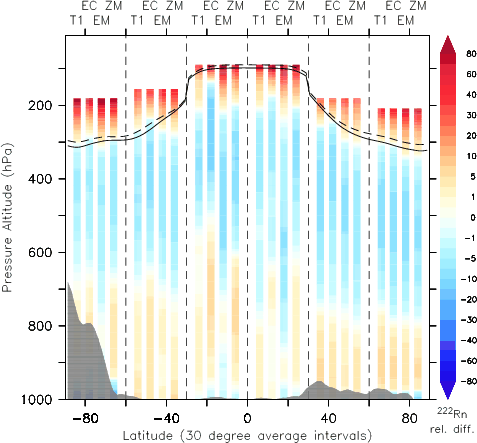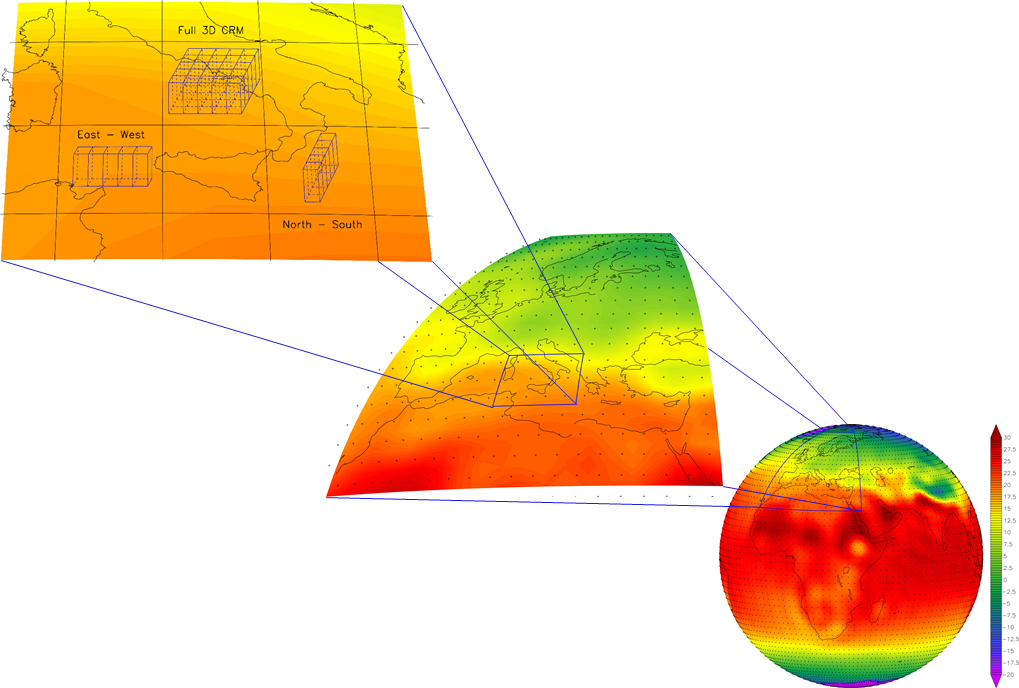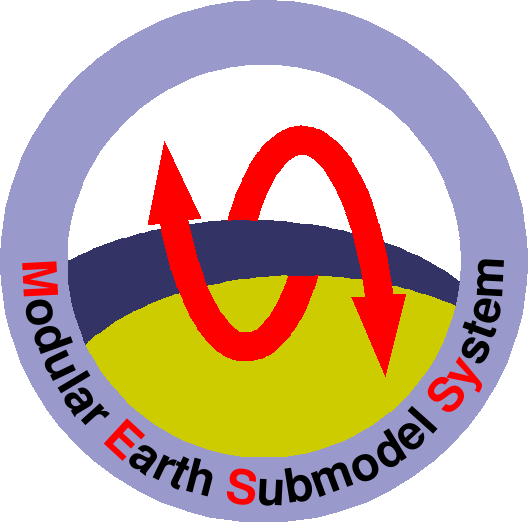Erdsystem-Modellierung
 |
|
 |
Several convection parameterisations have been developed to consider
the impact of small-scale unresolved processes in Earth System Models
associated with convective clouds. The influence of convection schemes
in general circulation models concerns a variety of atmospheric processes
like the transport of trace gases, formation of precipitation etc.
The parameterised mechanims induce a variety of uncertainties concerning
climate change scenarios. |
Superparameterisations
Cloud Resolving Models (CRMs) covering a horizontal grid
spacing from a few hundred meters up to a few kilometers have been used to
explicitly resolve small-scale and mesoscale processes. Special attention
has been paid to realistically represent cloud dynamics and cloud microphysics
involving cloud droplets, ice crystals, graupel and aerosols. The entire
variety of physical processes on the small-scale interacts with the larger-scale
circulation and has to be parameterised on the coarse grid of a general
circulation model (GCM). Since more than a decade an approach to connect
these two types of models which act on different scales has been developed
to resolve cloud processes and their interactions with the large-scale flow.
The concept is to use an ensemble of CRM grid cells in a 2D or 3D
configuration in each grid cell of the GCM to explicitly represent small-scale
processes avoiding the use of convection and large-scale cloud parameterisations
which are a major source for uncertainties regarding clouds. The idea is commonly
known as superparameterisation or cloud-resolving convection parameterisation.
I investigate the influence of this newly implemented parameterisation on the
atmospheric temperature, precipitation patterns and cloud occurence. Furthermore,
different transport routines are observed which reflect the fast convective
transport of short-lived tracers like radon or methyl iodide.

Earth System Modelling
 |
The global interactions and feedbacks of atmospheric
chemistry and the climate of the Earth system can only be described and analysed
with the help of comprehensive Earth
System Models. For that purpose I develop and apply the global chemistry climate model EMAC . |